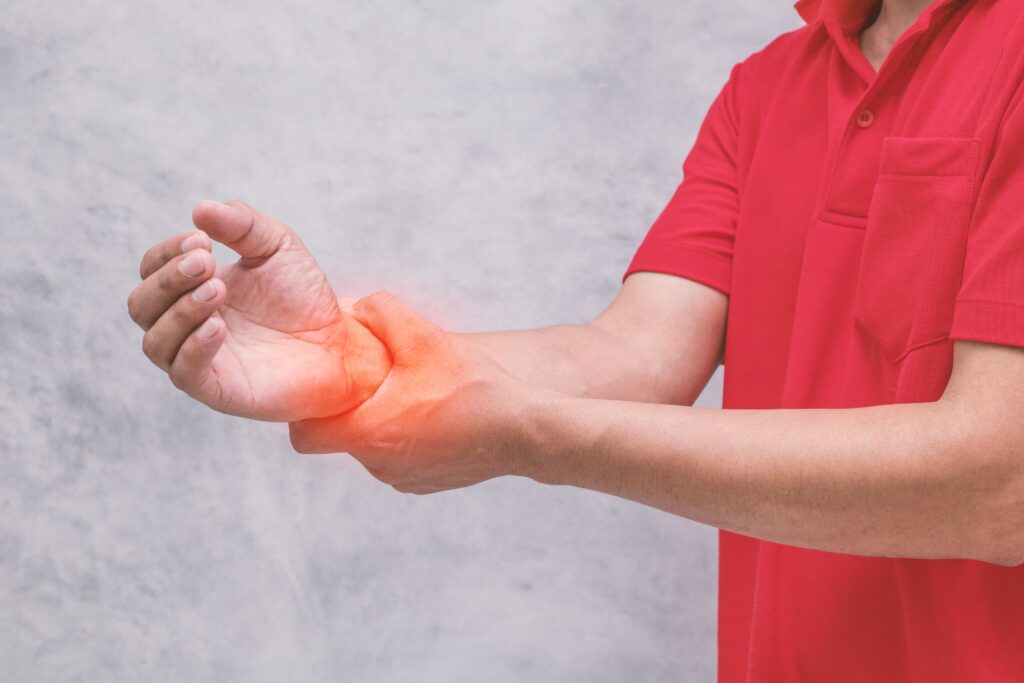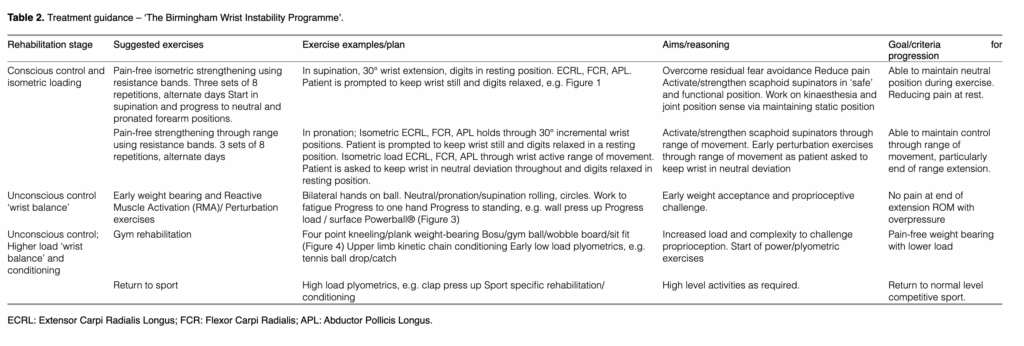Article Review: Intervention for Stage One Scapholunate Instability
Holmes, M. K., Taylor, S., Miller, C., & Brewster M., (2017). Early outcomes of ‘The Birmingham Wrist Instability Programme’: A pragmatic intervention for stage one scapholunate instability. Journal of Hand Therapy, 22. 90-100.

The Skinny:
Typically scapholunate (SL) instability patterns have been treated with surgery. However, more recently, conservative treatment options have been proposed for stage one scapholunate instabilities. Potentially benefitting patients who are not good surgical candidates or those who would like to try conservative treatment first. The study looked to determine if a scapholunate program could be beneficial in improving strength and function for stage one scapholunate instability.
In the Weeds:
Five patients with six wrists total completed the ‘Birmingham Wrist Instability Programme.’ The program was designed to incorporate biomechanics and training principles including the following, including tendon loading, proprioception, and plyometrics. See the table below for full details on specific exercises completed.

Table from article Holmes, M. K., Taylor, S., Miller, C., & Brewster M., (2017). Early outcomes of ‘The Birmingham Wrist Instability Programme’: A pragmatic intervention for stage one scapholunate instability. Journal of Hand Therapy, 22. 90-100.
Bringing it Home:
After completing the study, mean grip strength and Quick-Dash score improved significantly, indicating the ‘Birmingham Wrist Instability Programme’ can help treat scapholunate instabilities. The mean number of treatment sessions was 8.6 appointments with a follow-up period of 16 months.
Rating: 4/5
The study was small, which limits the ability to generalize the findings. The study did not look at long-term outcomes. The findings from this study support the need for the study to be completed on a larger scale with a longer follow-up period. Unfortunately, SL instability is something that typically requires long-term management. The study can be utilized as a blueprint to reproduce in a clinical setting for treating stage one scapholunate instability.

